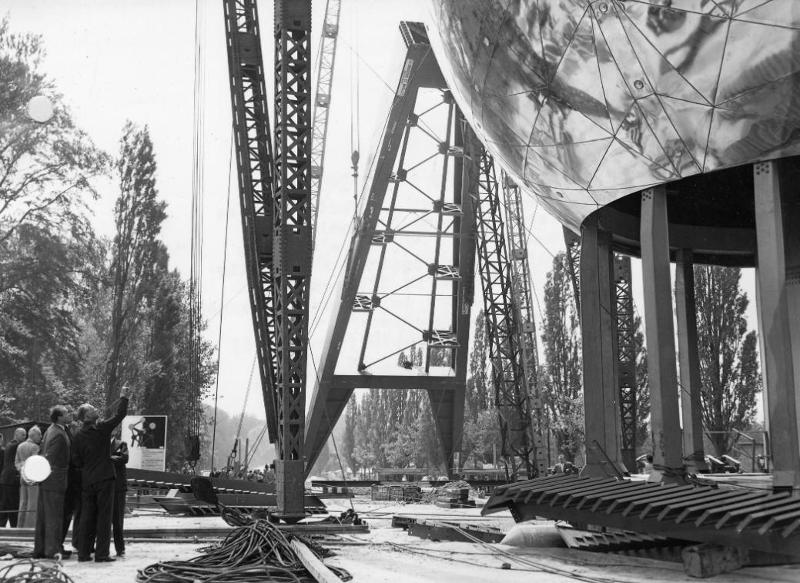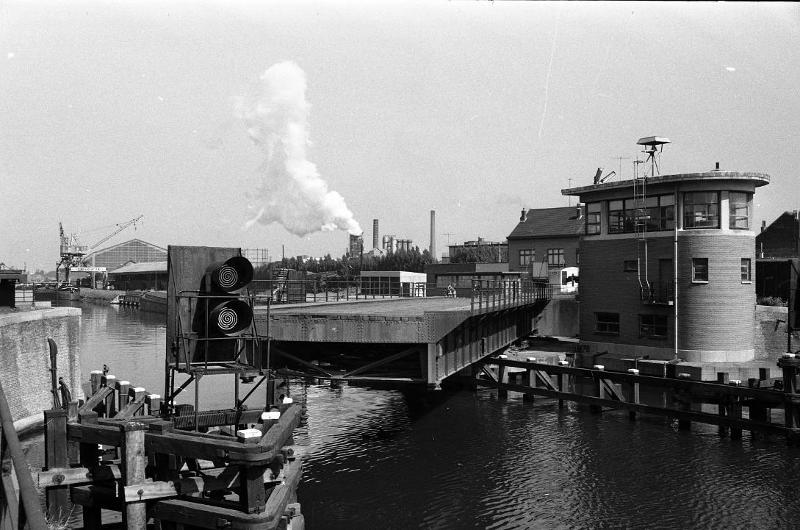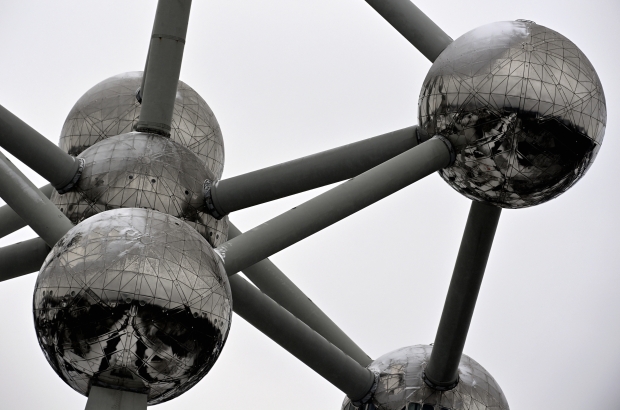- Daily & Weekly newsletters
- Buy & download The Bulletin
- Comment on our articles
Frans Cools, the man who gave Belgium balls, dies at 93
Frans Cools, the site manager responsible for the construction of the Atomium, passed away at the weekend at the age of 93, Bruzz reports. Cools, known as 'the man who gave Belgium balls' was most famous for his work on the iconic structure in Brussels but was also involved in the construction of many other well-known buildings.
Cools was born in 1929, in the Flemish town of Eindhout. During the Second World War he attended the technical school in Tessenderlo, but once the war was over, the difficult post-war period meant that he could no longer study. He and his brothers had to work to support the family and as there was little local employment, Cools and his siblings headed for Wallonia. There they found work as maintenance workers with the Count of Liedekerke.
After a year, Cools started working at the metal company 'Atelier de Constructions de Jambes-Namur'. He combined his work as a welder with evening school. It was here that he learned how to assemble metal structures; knowledge that would come in handy later in his career.
At the age of 24, Cools left his home country for Katanga, in the Belgian Congo. He joined a construction team that was tasked with building a bridge, 780 meters long, over the Lualaba River. It would become the largest bridge in Congo at that time.
Atomium plans "a bizarre construction"
A few years later, in 1956, the plans for the Atomium were presented to him. "A bizarre construction 102 metres high and weighing 2,500 tons, with nine spheres each with a diameter of 18 metres,” he told the Het Belang van Limburg newspaper in an interview on his 90th birthday “An iron atom that had been enlarged 165 billion times. Would I like to build that? Of course, I liked that."
The World Exhibition Expo 58 was to be a large-scale and prestigious event, intended to put Belgium and almost 40 other countries in the spotlight. The Atomium had to be the eye-catching centrepiece. Getting the building finished in time, for the opening on April 17, 1958, was going to be the greatest challenge Cools had yet faced in his career.

It proved to be tough deadline. The construction began in 1956 and only finished on the evening before the opening. But the hard graft of working day and night, including public holidays, had paid off. “In the winter there were days when it snowed so hard that those on the ground could not see what was happening above,” Cools told Het Laatste Nieuws.
"It is a miracle that no major accidents happened there: we were still working without helmets, without support, we crawled everywhere without safety belts and sometimes from a wooden box that was pulled up with a winch, and when it was a bit windy, it swung back and forth. It was misery from the beginning of the works: Heysel was still a wilderness at that time, like the Congo," he recounted.
The Atomium remains where it is today due to adjustments Cools himself made to the plans. "That plan was not quite right, did you know that?" he told Het Laatste Nieuws. "Because they wanted everything to be supported on one sphere, on the ground. I said that was impossible. They also had to support the sides, because otherwise everything would fall over. They hadn't thought of the cube inside the spheres on the side weighing 38 tons. A weight like that doesn't just float."
"So, I suggested putting legs under the side bulbs – the bipods that it now has. And above the middle sphere, I had a ring made, to mount temporary masts and arms on it to be able to work at that height. There was not a single crane in the whole of Belgium to work at that height."
The temporary structure became permanent
The Atomium was intended to be demolished six months after Expo 58, but it turned out to be so popular and strongly built that it was allowed to stay. Brussels' icon earned Cools the title 'The man who gave Belgium balls'.
"What I've built doesn't break. Not in a thousand years," he once proudly told Het Laatste Nieuws.
Sophie Moffat, project coordinator at BeCulture, always mentions Cools when giving guided tours. "He once said something very beautiful: 'Every piece of the Atomium has passed through my hands and head before it has been used', which is what I say every time."
Cools dedicated a lot of time and love into the Atomium, Moffat confirms. "Frans still cherished the Atomium,” she said. “We also celebrated his 90th birthday here."
Cools' legacy across Belgium
While the Atomium will always be the most famous of the projects Cools worked on, the impact of his engineering prowess is evident in other parts of Belgium.

In the 1960s and 70s, he was involved in many major constructions. When one thinks of the viaducts of highways that had to be built over valleys (Vilvoorde viaduct 1966, pictured), the steel spheres that are in the nuclear reactors of Doel 1 and 2, the lifts in the Limburg coal mines, the power plants of Mol and Merksem and the tower of the coal mine in Winterslag, Genk, one must remember that these exist in part due to Frans Cools.
In his time, Frans Cools was somewhat of a celebrity, showing Marilyn Monroe around the Atomium during a visit to Brussels. He met Hirohito, the emperor of Japan, and was so respected in high society that he was allowed to call King Baudouin by his first name.
For the past 10 years, after the death of his wife, he lived alone. He took care of himself, his son Marc told Het Belang van Limburg. "At the time of corona, he always wore his mask, if he ever went outside." Two weeks ago, he contracted the virus at a meeting, which made him a bit sick, according to his son.
A few days ago, Cools fell at his home, suffering a head wound. He was taken to the hospital in Diest, where he died on Saturday.
In the Atomium, a photo of Cools will be placed next to the scale model, so that international visitors can also put a face to the name of the iconic building's site manager.
Photos: King Leopold observes construction work on the Atomium (c) Belga Archives; Vilvoorde viaduct 1966 (c) Belga Archives









